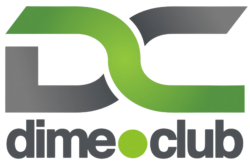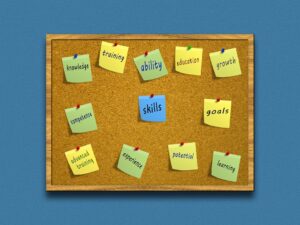
From Idea to Execution: A Step-by-Step Guide to Content Creation
Content creation can seem like a mammoth task, especially when you’re faced with the endless possibilities of topics, formats, and platforms. Transforming an idea into polished content requires a structured approach. This guide breaks down the content creation process into manageable steps, providing tips and suggestions, along with some facts to empower you on your journey from conception to execution.
Step 1: Ideation
Every great piece of content starts with a brilliant idea.
Brainstorming Techniques:
-
Mind Mapping: Create a visual representation of your ideas. Write your main topic in the center and branch out with related ideas. This method helps stimulate creative thinking.
-
Question Prompts: Use questions to explore potential angles. For example, "What are the common challenges in this topic?" or "What solutions can I provide?"
- Research Trends: Use tools like Google Trends or BuzzSumo to identify what topics are currently popular. This helps ensure that your content is timely and relevant.
Step 2: Research
Once you’ve settled on an idea, it’s crucial to conduct thorough research.
Why Research Matters:
Research helps validate your ideas and provides valuable information to include in your content. Statistics show that content backed by data is viewed as more credible.
Conducting Effective Research:
-
Use Reliable Sources: Always refer to credible publications, scholarly articles, and authoritative websites. This adds weight to your content.
-
Take Notes: Organize your findings to easily reference them later.
- Gather Diverse Perspectives: Read various viewpoints to enrich your content and make it more comprehensive.
Step 3: Planning
Planning is essential to streamline the content creation process.
Content Calendar:
Create a content calendar that outlines your topics, deadlines, platforms, and promotional strategies. This not only helps with organization but also keeps you accountable.
Outlining:
Draft a rough outline for your content. Structuring your ideas logically will enhance readability. A typical outline may include:
-
Introduction: Hook the reader and clearly state what the content will cover.
-
Main Body: Break this down into subsections or points that logically flow together.
- Conclusion: Summarize key takeaways and suggest calls-to-action.
Step 4: Writing
Now comes the creative part: writing the content itself.
Writing Tips:
-
Know Your Audience: Tailor your language, tone, and content type to your target demographic. Use personas to visualize your audience’s needs.
-
Engaging Introduction: Start with an interesting fact, a quote, or a question to grab attention.
- Edit and Edit Again: The first draft is rarely perfect. Revise for clarity, grammar, and flow.
Word Count Matters:
According to various studies, longer content tends to perform better in search rankings. A general rule of thumb is to aim for a minimum of 1,500 words for blog posts.
Step 5: Visual Content
Incorporating visuals can significantly enhance engagement.
Types of Visuals:
-
Images: Use high-quality images that support your text.
-
Infographics: These are particularly useful for distilling complex information into digestible formats.
- Videos: A short video can serve as a great tool to summarize your written content and reach a different audience.
Tools for Visual Creation:
Platforms like Canva, Adobe Spark, and Piktochart can help you create appealing visuals without needing extensive design skills.
Step 6: Editing and Proofreading
Editing is not just about fixing grammar mistakes. It’s about honing your content.
Editing Strategies:
-
Take a Break: Step away from your content for a while. A fresh set of eyes can catch mistakes you might overlook.
-
Read Aloud: Hearing your content can help identify awkward phrasing and improve flow.
- Peer Review: Having someone else review your work can provide invaluable feedback.
Step 7: Publishing
Choose the right platform for your content.
Platform Considerations:
-
Blog: Great for long-form content and SEO.
-
Social Media: Use platforms like Instagram, Twitter, or LinkedIn for shorter content and engaging visuals.
- Email Newsletters: Promoting your content to a subscriber list can increase viewership.
Best Times to Publish:
Research shows that specific days and times can enhance engagement.
-
Blog Posts: Tuesdays and Thursdays typically receive the most traffic.
- Social Media Posts: Early afternoons and evenings are often optimal for maximum visibility.
Step 8: Promotion
Creating even exceptional content won’t help if no one sees it.
Promotion Strategies:
-
Social Media Sharing: Utilize appropriate hashtags and tag relevant people to increase reach.
-
SEO Optimization: Use keywords strategically in your content to improve its search engine visibility.
- Email Marketing: Send snippets of your content to your mailing list with links directing them to the full piece.
Step 9: Analyze and Optimize
Once your content is published, it’s crucial to assess its performance.
Metrics to Measure:
-
Traffic: Use tools like Google Analytics to see how many people are reading your content.
-
Engagement: Look at comments, shares, and likes to gauge how well your content resonates.
- Conversion Rate: If your content has a specific call to action (e.g., signing up for a newsletter), measure how many readers converted.
Optimization Tips:
Use the insights gathered to tweak your future content strategy. If certain topics or formats perform better, create more around those.
Conclusion
Content creation is a multifaceted process that, when broken down into these manageable steps, becomes less daunting. By effectively moving from idea to execution and utilizing best practices at each stage, you can produce engaging content that resonates with your audience.
Embrace the process, stay organized, and don’t hesitate to iterate on your strategies as you learn what works best for you and your audience. Happy creating!







